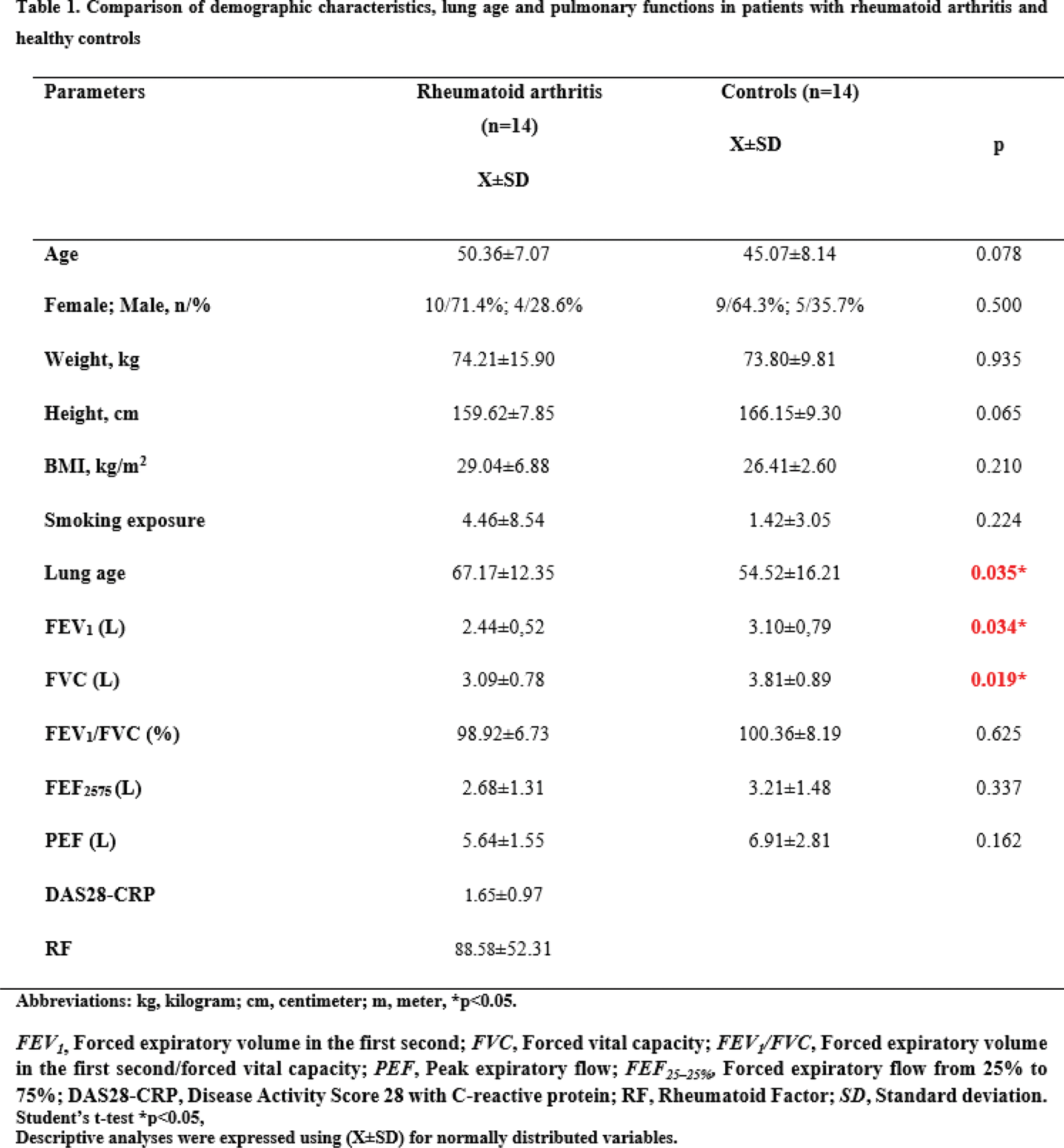

Background: The “lung age” estimation is used to determine respiratory pathologies and prediction of postoperative pulmonary complications and survival. Previous studies have shown that a lung age greater than the chronological age indicates worse respiratory function.
Objectives: Pulmonary functions are negatively affected in rheumatological diseases. In the literature, no studies have specifically assessed lung age in patients with rheumatoid arthritis. This study aimed to investigate the difference between lung age and real age in patients with rheumatoid arthritis, and compare healthy controls. In this study, we tested the hypothesis that disease in patients with rheumatoid arthritis may accelerate pulmonary aging compared to healthy controls.
Methods: A total of 14 patients (50.36±7.07 years) and 14 healthy controls (45.07±8.14) were included in the study. Demographic characteristics and disease-specific clinical values such as Rheumatoid Factor (RF) and Disease Activity Score 28 with C-reactive protein (DAS28-CRP) were recorded. Pulmonary functions including Forced Expiratory Volume in the First Second (FEV 1 ), Forced Vital Capacity (FVC), FEV 1 /FVC (%), Forced Expiratory Flow from 25% to 75% (FEF 25–75% ), Peak Expiratory Flow (PEF) were evaluated using a spirometer. The lung age was calculated according to a reference equation (Lung age (years)=1.33×Height (cm)−31.98×FEV 1 (L)−74.65).
Results: All demographic characteristics of groups were similar (p>0.05). The lung age in patients was statistically higher, FEV 1 and FVC values were statistically lower than controls (p<0.05). The difference between “lung age” and “real age” in patients (16.78±13.87) is greater than in healthy controls (10.28±14.56).
Conclusion: Pulmonary functions including lung age, FEV 1 and FVC deteriorated in patients. The calculation of the difference between “lung age” and “real age” may provide information about pulmonary involvement related to disease severity. Further studies are needed to investigate the causes influencing lung age in patients with rheumatoid arthritis.

REFERENCES: [1] Hong, Z. N., Weng, K., Chen, Z., Peng, K., & Kang, M. (2022). Difference between “lung age” and real age as a novel predictor of postoperative complications, long-term survival for patients with esophageal cancer after minimally invasive esophagectomy. Frontiers in Surgery, 9, 794553.
[2] Newbury, W., Newbury, J., Briggs, N., & Crockett, A. (2010). Exploring the need to update lung age equations. Primary Care Respiratory Journal, 19(3), 242-247.
[3] Haruki, T., Nakamura, H., Taniguchi, Y., Miwa, K., Adachi, Y., & Fujioka, S. (2010). ‘Lung age’predicts post‐operative complications and survival in lung cancer patients. Respirology, 15(3), 495-500.
Acknowledgements: NIL.
Disclosure of Interests: None declared.
© The Authors 2025. This abstract is an open access article published in Annals of Rheumatic Diseases under the CC BY-NC-ND license (